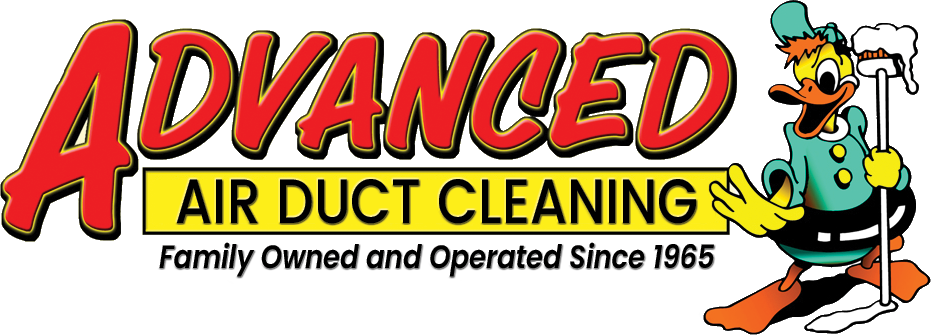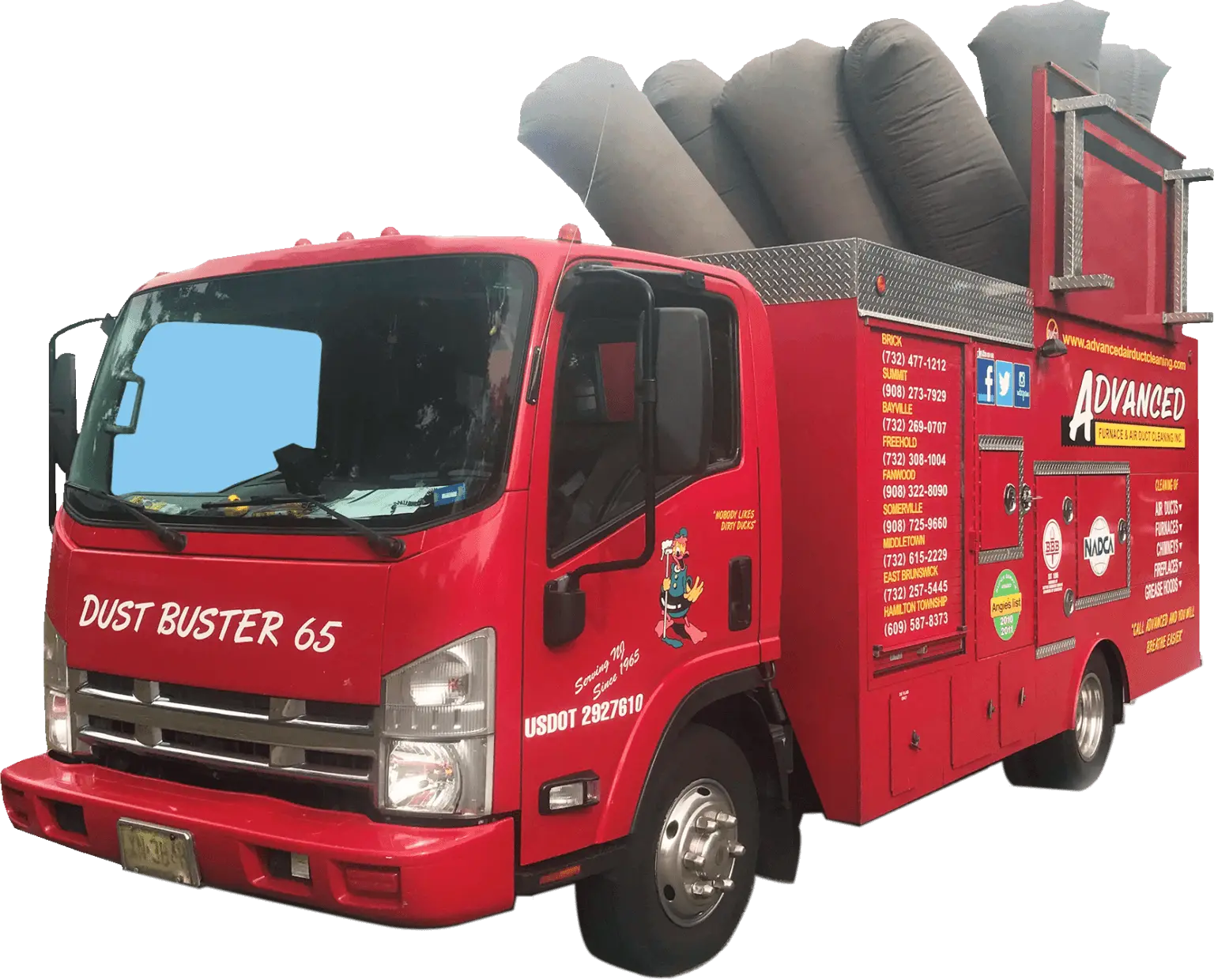Every so often a customer will call us a few days after they have had their ducts cleaned with a concern of a banging or whistling noise in their ducts that they hadn’t noticed prior. The simple answer is because at Advanced Furnace & Air Duct Cleaning, we do such a thorough job when we come to clean your vents that your HVAC system functions at its highest efficiency, almost as if it were new. When the thermostat of an HVAC system calls for warm or cold air, the fan on the blower will respond and start to blow (either air warmed by the burners or air cooled by the air conditioner coils). Essentially what this does is it fills the duct work with air. The pressure inside the ducts increases and the metal duct expands. This expansion is often accompanied by an audible popping noise. The frequency of this popping noise is directly related to the actual shape the duct work in the structure.
Duct work comes in three different shapes: circular, square and rectangular. Each shape has a different threshold for the amount of pressure (CFMs) it can handle. Round ducts can take the most pressure, followed by square ducts, and lastly, rectangle shaped ducts; essentially what this means is that rectangular shaped ductwork can take the least amount of pressure within its walls before it will “pop”. This is directly related to its structure; the rectangle will have two short stronger sides and two longer weaker sides. The above statements are based on the assumption that all other factors are the same and the same gage of sheet metal is used. In residential applications a 24-26 gage sheet metal is most commonly used; 18 gage sheet metal is usually found in commercial buildings. The lower the gage number of metal, the thicker/stronger it is. Commercial ductwork is stronger and thicker and less likely to react and pop under pressure. Though it can be an annoyance, the popping noise is not dangerous; it is simply an audible notice that your ducts are being exposed to more pressure than they can handle without expanding.
It is possible to reduce the amount of popping by using round ductwork, square ductwork, or simply increasing the gage of the metal used. This may be impractical or too costly. Alternatively, if using rectangular ducts, they can be constructed with crease or bend in the long side. This is called “breaking of the ductwork”. When a manufacturer “breaks” the ductwork he puts a crease/bend in the sheet metal before shaping and assembling it to the rectangular shape. This crease will sit on the wide side of the rectangle and it effectively stiffens and strengthens that larger side. Increased strength will enable it to withstand higher pressure before it “pops”.
So why does your home’s clean ducts make noise after a cleaning when you didn’t hear it before? The blower section of your HVAC system creates CFMs, effectively pressure. When everything is brand new it is clean and working at its optimum efficiency, the popping is common. Over time dirt, dust and debris collect on this fan component as well as the air conditioner coils, inside the walls of the ducts, on the return vents and on the filter of system. The CFMs passing through the system will naturally drop as the buildup of dirt increases and the pressure inside the vents decreases; eventually the popping will just stop. Now you hire a duct cleaner to come in and clean your now quiet system. If he does a thorough job and follows the NADCA (National Air Duct Cleaner Association) duct cleaning standards, the ductwork will be free of debris, the system components will be clean and the filters will have been changed or vacuumed; effectively the system will operate like it is new again. The pressure return to its original intensity and you will again hear the popping of the sheet metal.
There are some homeowners that have a boom or popping sound when their heat comes on and they may not have had their ducts or system cleaned recently. A delayed ignition in a furnace can also cause this noise. A gas powered heating system generates the heat for the home in the burner assembly of the furnace. Most burner assemblies are comprised of 5 to 6 burners. Over time these components can get rusty or blocked by debris. When the thermostat calls for an increase in temperature in the home, the system responds by emitting natural gas from the burners. In a properly functioning system, this gas would ignite from the pilot and each of the 1 or 6 burners would fire up. However, if one or more of the burners is blocked or rusty, this ignition could take several seconds or even minutes. The burner would initially fail to fire up then eventually when enough gas entered the furnace there would be a small explosion as it suddenly ignites.
If you suspect that your heating system may have delayed ignition such as this, you can “diagnose” this problem with the help of another family member. One person should stand by the furnace (at a safe distance of several feet) while the second adjusts the thermostat to call for heat. If after several seconds or minutes you hear a boom from within the walls of the furnace (or you might even see the flames), you most likely have a clog somewhere and the ignition of your burners is delayed. If this is case, you certainly want to call in a professional for service. Your furnace needs to be cleaned. If you continue to run the heat without cleaning it, it is not only a fire hazard, but you could also crack your heat exchanger.
In some homes there is not only the reappearance of the popping noise but there is also a whistling from some of their individual vents within the home. Again this whistling is a result of the increase in pressure and efficiency in the newly cleaned system. The whistling is essentially resulting from the flow of air as it passes through the louvers of the heat vent covers. Be sure that you have the proper vent cover on the opening; if the cover has been changed or if it were not properly sized to begin with, you may be able to fix the whistling by installing the proper cover with appropriate louvers. Other than replacing the cover, the only other thing you can try is to lower your fan speed in the winter. You would not want to use a low fan speed in summer because you need as many CFMs as possible to pass the air over the air conditioner coils. If a low volume of air passes over the coils, there is a risk of them freezing up. You might be tempted to change the size of the louvers or even the angle of them but these are appropriately sized for each location and you can’t just simply change them out. Yes, the whistling may be a bit of an annoyance but keep in mind it is a sign that your heating and cooling system is working at its optimum efficiency and essentially is saving you money.
You might think air duct cleaning isn’t really worth the money but it really is an essential, but often overlooked, step of home maintenance. You may pay a duct cleaner $400-$650 or more to clean your ductwork but you do get much more for your money than just cleaner air. Your HVAC system will run stronger and more efficiently and you the indoor air quality of your home will improve. You can sleep better knowing that you furnace is clean and safe and running smoothly; it’s well worth the money spent.

